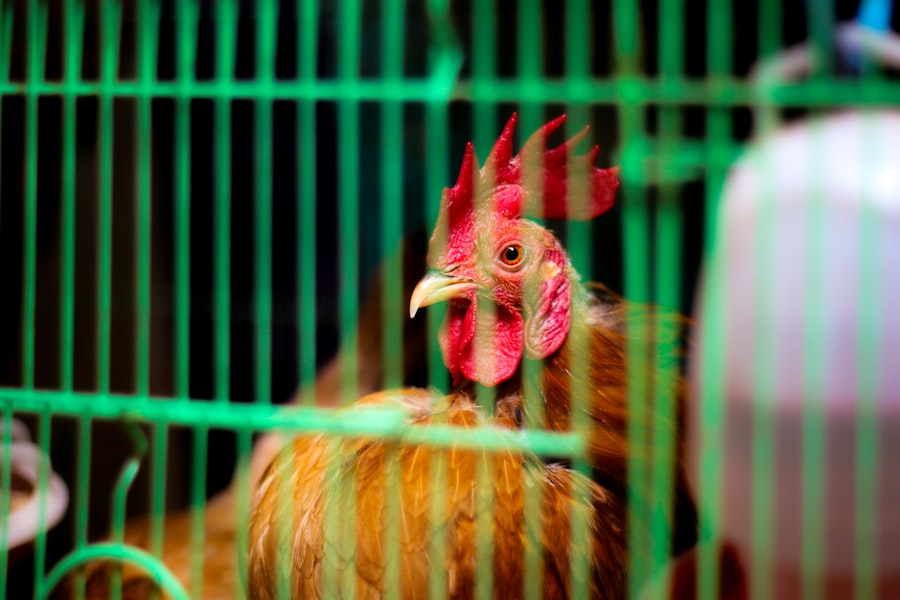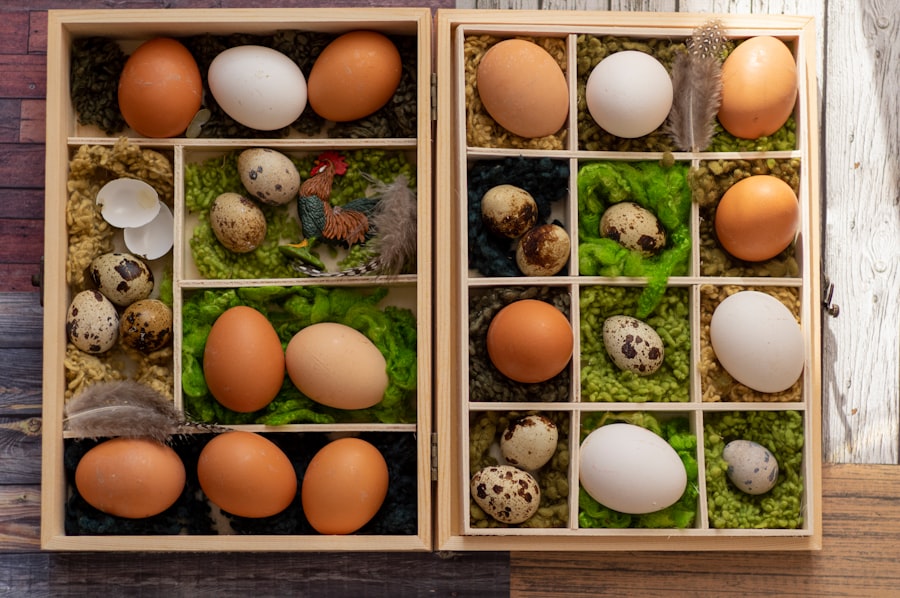When selecting a bantam chicken breed, several factors should be considered. The primary consideration is the intended purpose for keeping bantams. Some breeds are renowned for their egg production, such as Sebrights, Dutch, and Japanese bantams.
Others are valued for their ornamental qualities, including Silkies, Frizzles, and Polish bantams. Climate is another crucial factor in breed selection. Certain bantam breeds are better adapted to cold environments, like the Cochin bantam, which is well-suited for northern regions.
In contrast, tropical breeds such as the Serama bantam thrive in warm, humid conditions. Available space is also an important consideration. Some bantam breeds are more adaptable to confined areas and perform well in smaller spaces, while others require more room for foraging and roaming.
By evaluating these factors, one can select a bantam breed that is appropriate for their specific requirements and environmental conditions.
Table of Contents
- 1 Creating a Suitable Living Environment for Bantam Chickens
- 2 Feeding and Nutrition for Bantam Chickens
- 3 Health and Wellness Care for Bantam Chickens
- 4 Handling and Socializing Bantam Chickens
- 5 Breeding and Hatching Bantam Chickens
- 6 Common Challenges and Solutions for Keeping Bantam Chickens
- 7 FAQs
- 7.1 What are bantam chickens?
- 7.2 What are the benefits of keeping bantam chickens?
- 7.3 What do bantam chickens eat?
- 7.4 How much space do bantam chickens need?
- 7.5 What kind of housing do bantam chickens need?
- 7.6 Do bantam chickens require special care?
- 7.7 Can bantam chickens be kept with other poultry?
- 7.8 What are some common bantam chicken breeds?
Key Takeaways
- Consider the space available, climate, and purpose (eggs, meat, pets) when choosing a breed of bantam chicken
- Provide a secure coop with proper ventilation, nesting boxes, and roosting bars for bantam chickens to thrive
- Offer a balanced diet of commercial feed, grains, fruits, and vegetables to meet the nutritional needs of bantam chickens
- Regularly monitor for signs of illness, provide vaccinations, and practice good hygiene to maintain the health of bantam chickens
- Spend time handling and socializing bantam chickens to build trust and reduce stress, leading to happier and friendlier birds
Creating a Suitable Living Environment for Bantam Chickens
The Coop: A Safe Haven
The first step is to provide a secure and predator-proof coop for your bantams to roost and lay eggs. The coop should be well-ventilated and provide enough space for each chicken to move around comfortably.
Nesting Boxes and Coop Maintenance
Additionally, you’ll want to provide nesting boxes filled with clean bedding for your hens to lay their eggs. It’s important to keep the coop clean and free of droppings to prevent the spread of disease and parasites.
The Outdoor Space: Room to Explore
In addition to a coop, bantam chickens also need access to an outdoor run or free-range area where they can scratch and peck for insects and plants. This outdoor space should be fenced to protect your chickens from predators and provide them with plenty of room to exercise and explore. Providing perches and dust bathing areas in the outdoor space will also help keep your bantams healthy and entertained.
By creating a suitable living environment that meets their physical and behavioral needs, you can ensure that your bantam chickens thrive and lead happy, healthy lives.
Feeding and Nutrition for Bantam Chickens

Feeding and nutrition are crucial aspects of caring for bantam chickens. A well-balanced diet is essential for their overall health, egg production, and growth. When it comes to feeding bantam chickens, it’s important to provide them with a high-quality commercial feed specifically formulated for bantam breeds.
This feed should contain the right balance of protein, carbohydrates, vitamins, and minerals to meet their nutritional needs. Additionally, offering access to fresh water at all times is essential for keeping your bantams hydrated and healthy. In addition to commercial feed, bantam chickens can also benefit from supplemental treats such as fruits, vegetables, mealworms, and scratch grains.
These treats should be offered in moderation and should not exceed 10% of their total diet. Providing access to grit is also important for bantam chickens, as it helps them digest their food by grinding it in their gizzards. It’s important to monitor your bantam chickens’ body condition and adjust their feed intake accordingly to prevent obesity or malnutrition.
By providing a well-balanced diet and monitoring their nutritional needs, you can ensure that your bantam chickens remain healthy and productive.
Health and Wellness Care for Bantam Chickens
Maintaining the health and wellness of your bantam chickens is essential for their longevity and productivity. Regular health checks are important to monitor for signs of illness or injury. This includes checking their eyes, comb, wattles, feathers, and overall body condition.
Additionally, keeping their living environment clean and free of droppings will help prevent the spread of disease and parasites. Providing regular access to fresh water and high-quality feed will also support their overall health and well-being. In addition to regular health checks, it’s important to establish a relationship with a poultry veterinarian who can provide guidance on preventative care and treatment options.
Vaccinations may be recommended depending on the prevalence of certain diseases in your area. Additionally, providing regular dust bathing areas and perches will help keep your bantam chickens clean and free of mites and lice. By staying proactive about their health care needs, you can ensure that your bantam chickens remain healthy and happy members of your flock.
Handling and socializing bantam chickens is an important aspect of their care, especially if you plan to interact with them regularly or keep them as pets. It’s important to handle your bantams gently from a young age to help them become accustomed to human interaction. This will make it easier to handle them for health checks, grooming, or other necessary tasks as they grow older.
Additionally, spending time with your bantam chickens can help build trust and strengthen your bond with them. Socializing your bantam chickens with other members of their flock is also important for their overall well-being. Chickens are social animals that thrive in the company of others.
Providing opportunities for them to interact with each other through activities such as dust bathing, foraging, or roosting together will help keep them mentally stimulated and reduce stress. Additionally, introducing new members to the flock gradually can help minimize aggression and establish a harmonious social dynamic within the group. By handling and socializing your bantam chickens regularly, you can help them feel comfortable and secure in their environment.
Breeding and Hatching Bantam Chickens

Understanding Genetics and Traits
This knowledge will help you select breeding pairs that will produce offspring with desirable characteristics such as coloration, feather type, or egg-laying abilities.
Health and Genetic Defects
Additionally, it’s crucial to ensure that both the male and female birds are healthy and free from genetic defects that could be passed on to their offspring.
Hatching and Rearing Chicks
When it comes to hatching bantam eggs, you can use natural incubation with a broody hen or an artificial incubator to control temperature and humidity levels. Once the chicks have hatched, providing them with a warm, safe environment and access to high-quality feed and water will help them thrive in their early days of life. By carefully planning and executing a breeding and hatching program, you can contribute to the preservation and improvement of bantam chicken breeds.
Common Challenges and Solutions for Keeping Bantam Chickens
Keeping bantam chickens comes with its own set of challenges that poultry enthusiasts may encounter. One common challenge is predator attacks, which can pose a threat to the safety of your bantams. To protect them from predators such as foxes, raccoons, or birds of prey, it’s important to secure their coop with sturdy fencing and locks.
Additionally, providing adequate lighting around the coop at night can help deter nocturnal predators. Another challenge that bantam chicken keepers may face is maintaining a harmonious social dynamic within the flock. Aggression between flock members can lead to injuries or stress among the birds.
To address this challenge, providing enough space, perches, and hiding spots within the coop can help reduce competition for resources and minimize aggressive behavior. Additionally, introducing new members to the flock gradually can help prevent conflicts between established members. Finally, managing egg production can be a challenge for those keeping bantam chickens primarily for their eggs.
Factors such as age, diet, lighting conditions, and stress can impact egg production in hens. Providing a well-balanced diet, access to natural light or supplemental lighting during shorter daylight periods, and minimizing stressors within the flock can help support consistent egg production. By being proactive in addressing these common challenges, you can create a safe and harmonious environment for your bantam chickens to thrive.
In conclusion, keeping bantam chickens requires careful consideration of their breed selection, living environment, feeding and nutrition needs, health care requirements, handling and socialization practices, breeding and hatching programs, as well as addressing common challenges that may arise. By taking these factors into account and implementing best practices for their care, you can ensure that your bantam chickens lead happy, healthy lives as valued members of your flock.
If you’re interested in keeping bantam chickens, you may also want to consider the design and size of your chicken coop. A well-designed coop can make a big difference in the health and happiness of your chickens. Check out this article on chicken coop door size for tips on creating the perfect coop for your bantams.
FAQs
What are bantam chickens?
Bantam chickens are small breeds of chickens, typically one-fourth to one-fifth the size of standard chicken breeds. They are known for their ornamental and decorative qualities.
What are the benefits of keeping bantam chickens?
Bantam chickens are popular for their small size, colorful plumage, and friendly disposition. They are also good foragers and can help control pests in the garden.
What do bantam chickens eat?
Bantam chickens eat a diet of commercial poultry feed, supplemented with grains, fruits, vegetables, and occasional treats like mealworms or kitchen scraps.
How much space do bantam chickens need?
Bantam chickens require less space than standard chicken breeds. A minimum of 2-3 square feet per bird in the coop and 8-10 square feet per bird in the outdoor run is recommended.
What kind of housing do bantam chickens need?
Bantam chickens need a secure and predator-proof coop with nesting boxes and roosting perches. They also need access to a protected outdoor run for exercise and foraging.
Do bantam chickens require special care?
Bantam chickens require the same basic care as standard chickens, including regular feeding, access to clean water, protection from predators, and routine health checks.
Can bantam chickens be kept with other poultry?
Bantam chickens can be kept with other poultry, but it’s important to consider the size and temperament of the other birds. They may do well with other bantam breeds or with standard chickens of similar size.
What are some common bantam chicken breeds?
Some common bantam chicken breeds include Silkies, Sebrights, Dutch, Pekins, and Seramas. Each breed has its own unique characteristics and appearance.
Meet Walter, the feathered-friend fanatic of Florida! Nestled in the sunshine state, Walter struts through life with his feathered companions, clucking his way to happiness. With a coop that’s fancier than a five-star hotel, he’s the Don Juan of the chicken world. When he’s not teaching his hens to do the cha-cha, you’ll find him in a heated debate with his prized rooster, Sir Clucks-a-Lot. Walter’s poultry passion is no yolk; he’s the sunny-side-up guy you never knew you needed in your flock of friends!







